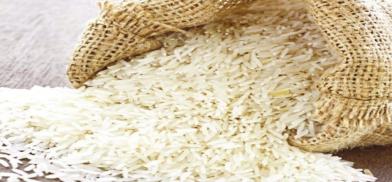Latest on India, Pakistan – a battle over Basmati
Although India controls two-thirds of the global Basmati market, competition between the nations has grown in recent years as Pakistan increases sales to Europe, writes Mahendra Ved for South Asia Monitor

Among the many things small and big that touch the India-Pakistan relationship, there is one that can be called the why-not-me aspiration. Whatever one wants, the other disputes it and stakes a claim. Among them is the famed Koh-i-Noor diamond. Both claimed it, making it convenient for the British to refuse both claims and keep the priceless treasure.
The current dispute, however, is over what adorns and spreads fragrance on the dinner tables of people not only in both countries but also across the world. For “the rice fit for kings”, both are competing to gain exclusive Geographical Indication (GI) status from the European Union (EU).
As India sought to consolidate its lead in the race to win the GI for Basmati rice in the lucrative EU market at the India-EU talks this May, Pakistan has tried to convert the race into a generic one, combining several products including its famed Chaunsa mangoes. Confusion prevails as its exporters are facing opposition from their own government.
A GI with the EU could boost India’s Basmati rice exports to USD 500 million in 1-2 years from the current USD 250 million as its worth is expected to go up with the quality-conscious consumers, Indian officials say.
The necessary process over Basmati may be complete next year. Pakistani exporters filed a notice of opposition last December. The reasoned statement in opposition to India’s claim on the GI tag was filed on February 5 this year. The third step is the cooling-off period of three months after which the hearings in DG Agriculture of the European Commission will commence.
India’s 2018 application, which was published in an EU journal on September 11, 2020, asked the bloc to grant GI status to its Basmati rice, which would tag it as a product inextricably connected to its place of origin. It is similar to Darjeeling tea for India, Champagne from France, Potatoes from Idaho, or Kalamata olives from Greece. GI labels - to indicate a specific geographical origin of a product - often serve as a mark of quality and help exporters charge higher prices.
India has edge
India is ahead, as of now, because Pakistan seems a classic case of the left hand unaware of what the right hand of the government is doing. Last December, Prime Minister Imran Khan personally chose a European lobbying firm to make a strong case for his country, and oppose India’s bid for GI in the EU. However, on May 21, his Special Assistant on Agriculture, Jamshed Cheema, chastised Pakistani rice exporters for being “intoxicated with Basmati” when the rising global demand is of non-Basmati, coarser rice.
Cheema’s point is that Pakistan’s emerging major importer is China that wants only the coarser rice. Proving his point is the official data. Basmati exports have plunged by 38 percent during 20-21 in Pakistan as exporters were ‘preoccupied’ with exporting coarser variety to China. Rice Exporters Association of Pakistan (REAP) chairperson Abdul Qayyum Paracha told Dawn newspaper on February 9, 2021: “Chinese buying of Pakistan’s non-Basmati rice had kept our exporters busy in September to December 2020.”
But now, he says Cheema’s statement was “irresponsible, false and misleading.” He claimed that Pakistan’s Basmati exports to the EU were USD 800 million, rising and had great potential. “Instead of encouraging research and yield increase in basmati crop, which has a potential of more than USD 3 billion export annually, Mr. Cheema is discouraging sowing of this heritage product,” Paracha said.
Going by official data, Pakistan’s Basmati exports stood at only USD 262 million last year. Overall, thanks to the Covid 19 pandemic and other factors, Pakistan’s rice export plunged 10 percent in quantity to 1.824 million tonnes and 6.74 percent in value to USD 963 million in July-Dec 2020-21 against the same period in the last fiscal year, its official data says.
Both India and Pakistan are aware of the importance of the GI. A GI in a prosperous region is both profitable and lends prestige and the two South Asians who exclusively produce Basmati, have been engaged in a long tussle.
India held its consultations with the EU on May 8 and exporters are confident of winning the GI because as a larger market, India has a lot more, including allowing access to European wines and spirits. Indians say paragraph 23 of the Joint Statement issued at the end of the virtual summit indicates granting of the GI to India is imminent.
Basmati history
Basmati has a long history stretching perhaps to the ancient era, but certainly the medieval era. It is grown mainly in the two Punjabs. It is big commerce, but also a matter of prestige that neither wants to lose. It turns out that India has a 65 percent share in the global Basmati market, while Pakistan has the rest.
India’s Basmati cultivation is dictated by geography. There is a ‘Basmati growing region’, one which includes the states and Union territories of Jammu and Kashmir, Himachal Pradesh, Punjab, Haryana, Chandigarh, Delhi, Uttarakhand and Uttar Pradesh. The cold weather of this region is suitable for Basmati cultivation.
But Pakistan too has a Basmati belt, the Kalar bowl, a tract of land in the interfluve between the Ravi and the Chenab rivers, comprising the Narowal, Sialkot, Gujranwala, Hafizabad and Sheikhupura districts in Punjab province.
Till the 2020-21 downfall, Pakistan’s Basmati exports to the European Union had almost doubled over the previous three years since permissible levels of pesticides on imported agricultural products to the bloc were reduced in 2018, while India has repeatedly failed these tests.
In 2019-20, India produced 7.5 million tonnes, of which 61 percent cent was exported, earning the country Rs 31,025 crore, according to the Ministry of Commerce. India sold USD 4.3 billion worth of basmati overseas last year, three-quarters of it to the Middle East. Roughly USD 80 million was sold to the U.S., according to the All India Rice Exporters Assn.
Where India gains are its low production cost and low freight compared to Pakistan. Although India controls two-thirds of the global Basmati market, competition between the nations has grown in recent years as Pakistan increases sales to Europe.
Iran has been India’s major customer. But Indian suppliers have found it difficult to receive payments from Iran without running afoul of U.S. as there are international sanctions against the Islamic Republic. News reports indicate that Pakistani traders have been able to set up new barter mechanisms with Iran while Indians have struggled to quickly convert their old cash-based deals to barter.
Although an EU designation would not apply in the American market, it could help lift the profile of Basmati as an Indian product in the minds of global consumers.
India-Pakistan joint move
There was a time in the late 1990s when India and Pakistan teamed up against RiceTec, a Texas-based American firm that sought to appropriate Basmati rice. India at the time actively supported the Pakistani government. Both eventually succeeded in thwarting RiceTec’s scheme.
More than a decade ago, the two countries discussed jointly applying for GI status for basmati rice. But the talks fell apart after the 2008 terrorist attacks in Mumbai, which India blamed on Pakistan, and since then relations between the two have scarcely improved.
Some Indian legal experts say that even without India claiming exclusivity, the EU could decide to grant geographical protection to “Indian Basmati,” meaning that Pakistan couldn’t market its product as Basmati without its own designation.
If the EU accepts this interpretation, and given the cold vibes with Pakistan - witnessed in Islamabad's criticism of Europe for engaging in alleged Islamophobia and demand by the country's Islamists for a boycott of a key EU member France for the Charlie Hedbo cartoons - the verdict may go in India's favor. But there is a long way to go.
(The writer is the editor of thecommonwealthnews.com. The views are personal. He can be contacted at mahendraved07@gmail.com)










Post a Comment